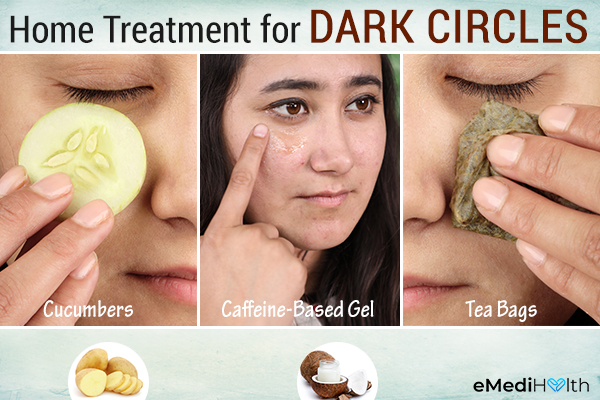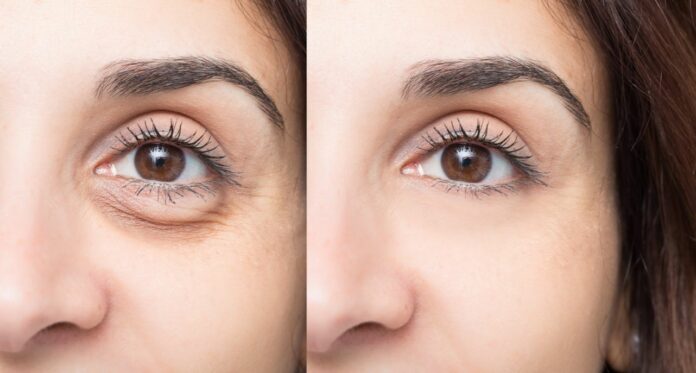Introduction
Dark circles and puffy eyes are common concerns that can make us look tired and aged. In this article, we will explore effective remedies to reduce these issues and restore a fresh and youthful appearance. From understanding the causes to implementing targeted treatments, we will provide a comprehensive guide to help you reduce the appearance of dark circles and diminish puffiness.
Causes of Dark Circles and Puffy Eyes
1. Lack of Sleep: One of the most common causes of dark circles and puffy eyes is a lack of sleep or poor sleep quality. When you don’t get enough rest, blood vessels under the thin skin around your eyes can dilate, resulting in a dark, shadowy appearance. In addition, fluid may accumulate in the under-eye area, leading to puffiness.
2. Genetics: Some individuals are genetically predisposed to having dark circles and puffy eyes. This can be attributed to factors such as thinner skin, which makes underlying blood vessels more visible, or weaker blood vessel structure, which can contribute to increased fluid retention.
3. Aging: With the age, the skin loses its elasticity and becomes thinner. This can make the blood vessels under the eyes more prominent, resulting in the appearance of dark circles. Additionally, the fat pads that normally support the under-eye area can diminish, leading to a sunken appearance and accentuated puffiness.
4. Allergies and Sinus Congestion: Allergies and sinus congestion can cause inflammation in the nasal passages and around the eyes. This inflammation can lead to increased blood flow and fluid retention, resulting in puffy eyes. Allergic reactions can also trigger rubbing or itching of the eyes, which can worsen the appearance of dark circles.
Lifestyle Changes for reduce Dark Circles and Puffy Eyes
1. Quality Sleep: Getting sufficient, restful sleep is crucial for overall skin health. Aim for 7-9 hours of sleep each night to allow your body to repair and rejuvenate. Elevating your head with an extra pillow can also help prevent fluid accumulation and reduce morning puffiness.
2. Hydration: Dehydration can worsen the appearance of dark circles and puffiness. Drink an adequate amount of water throughout the day to keep your body and skin hydrated. Avoid excessive consumption of caffeinated beverages or alcohol, as they can contribute to dehydration.
3. Healthy Diet: Maintain a nutritious diet rich in fruits, vegetables, and foods containing antioxidants, vitamins, and minerals. These nutrients can support skin health and reduce inflammation. Include foods with high water content, such as cucumbers and watermelon, to promote hydration.
4. Stress Management: chronic stress can lead to poor sleep quality and exacerbate dark circles and puffiness. Practice stress management techniques like meditation, deep breathing exercises, or engaging in hobbies you enjoy. Taking time for self-care can help reduce stress and promote overall well-being, contributing to healthier-looking skin.
Home Remedies for Dark Circles and Puffy Eyes

1. Cold Compress:
Applying a cold compress can help constrict blood vessels and reduce puffiness around the eyes. You can use chilled cucumber slices, cold spoons, or even a clean washcloth soaked in cold water. Place the compress on your closed eyelids for about 10 minutes to soothe and refresh the under-eye area.
2. Tea Bags:
Tea bags, particularly green tea or chamomile, can help reduce inflammation and soothe the under-eye area. Steep two tea bags in hot water, then remove and let them cool. Place the chilled tea bags over your closed eyes for 15 minutes. The natural compounds in tea, such as antioxidants and tannins, can help diminish puffiness and alleviate dark circles.
3. Cucumber Slices:
Cucumber has natural cooling and skin-soothing properties, making it a popular remedy for reducing dark circles and puffiness. Slice a chilled cucumber and place the slices over your closed eyes for about 15 minutes. The cool temperature and the cucumber’s antioxidants can help constrict blood vessels, reduce inflammation, and refresh the under-eye area.
4. Aloe Vera Gel:
Aloe vera is known for its hydrating and soothing properties. Extract fresh gel from an aloe vera leaf and gently massage it around the eyes. Leave it on for about 15 minutes before rinsing with cool water. The aloe vera gel can moisturize the skin, reduce inflammation, and alleviate puffiness.
Skincare Products for Dark Circles and Puffy Eyes
1. Eye Creams:
Look for eye creams specifically formulated to target dark circles and puffiness. Ingredients such as vitamin C, retinol, caffeine, and peptides can help brighten the under-eye area, reduce inflammation, and promote circulation.
2. Concealers:
Color-correcting concealers with peach or orange undertones to neutralize the appearance of dark circles. Choose a lightweight, hydrating formula that blends well with your skin tone for a natural look.
3. Cooling Eye Gels or Rollers:
These products often contain soothing ingredients like aloe vera or cucumber extract, along with a cooling effect. They can help constrict blood vessels, reduce puffiness, and provide a refreshing sensation.
4. Under Eye Masks:
These are infused with hydrating and brightening ingredients, such as hyaluronic acid and vitamin C. They provide a targeted treatment to moisturize, nourish, and rejuvenate the under-eye area, reducing the appearance of dark circles and puffiness.
Conclusion
Dark circles and puffy eyes can be effectively addressed with the right remedies and skincare routine. By implementing lifestyle changes, such as getting enough sleep and managing stress, incorporating home remedies like cold compresses and tea bags, and using targeted skincare products, you can reduce the appearance of dark circles and puffiness. Embrace these effective remedies, and reveal brighter and revitalized under-eye areas, achieving a refreshed and youthful look. Consult with a dermatologist for personalized advice and recommendations based on your specific concerns and skin type.


